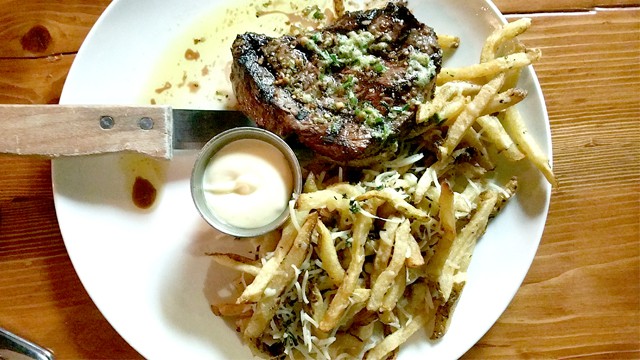Some Mississauga Restaurants Will Have to Follow a New Rule in 2017
Published December 29, 2016 at 9:28 pm

For years, talk about obesity and overeating has dominated the news cycle. Every so often, a new and alarming report emerges that confirms what people–health experts and the public–have known for some time: people are super fat and only getting fatter.
At this point, the news is as mundane as it is common.
That said, there is a case to be made about the dangers of overeating and the Ontario government is attempting to compel restaurants to inform consumers of exactly how many calories they’re devouring in one meal.
Starting January 1, 2017, restaurants, convenience stores, movie theatres and other food service companies with 20 or more locations in Ontario will be required to post calorie counts for menu items. The move is part of the province’s Healthy Menu Choices Act.
Some exceptions will apply (grocery stores, for example, won’t have to provide calorie counts for prepared fruit and vegetable platters intended for multiple diners), but big name chains will have to disclose exactly how big a caloric punch their signature burger and steak meals are packing.
While some would argue that the move will help diners make informed choices, some critics fear the policy could harm consumers who suffer from disordered eating.
An online petition was recently launched by Andrea LaMarre, a student at the University of Guelph, that calls for a repeal of the act.
“We oppose this Act on the grounds that having calorie counts prominently displayed on menus will be detrimental to many individuals with eating disorders and in recovery from eating disorders,” the Change.org petition reads. “Eating disorders carry the highest mortality rate of all mental illnesses, and have significant impacts on the quality of life and health status of those suffering and their family members. Those with eating disorders, at risk for eating disorders, or in recovery from eating disorders will be negatively impacted by legislation that forces them to encounter caloric information whenever they look at a menu.”
While many would argue that the act is simply meant to raise awareness and, ideally, curb overeating, critics like LaMarre raise a salient point–the addition of calorie counts to menus is, for many, anxiety-provoking.
LaMarre argues that, though the goal may be to address obesity, the rule will undoubtedly affect people of all body weights and potentially trigger negative associations with eating and food.
“We argue that this act is unhelpful insofar as it positions caloric content as the most important aspect of decision-making around food. This is a dangerous perspective regardless of a person’s body size or the presence or lack thereof of an eating disorder,” the petition reads. “Dietary science is continually in flux, particularly where weight loss is concerned. Researchers disagree about the relative importance of calories in overall health. We know still less about the effects of displayed calorie counts on both health behaviours and health outcomes. Leaving aside a debate about whether weight loss is a desirable outcome, we should consider whether implementing calorie counts on menus actually leads to the suggested outcome: a reduction in overall caloric intake.”
LaMarre’s concerns are valid–calorie counts at restaurants can indeed be, if not stressful, a monumental buzzkill and annoying shame-inducer. It’s also important to note that some restaurants have been voluntarily providing caloric information for some time.
The Keg, which operates two locations in Mississauga, currently provides calorie counts on its menu.
For what it’s worth, it’s disheartening to learn exactly how many calories are in a delectable bleu cheese filet (if you really want to know, it’s 780).
Other restaurants that offer easily accessible calorie counts include Tim Hortons (360 calories for a plain bagel with light cream cheese), Starbucks (260 calories for a grande chestnut praline latte) and Earl’s (880 calories for a Santa Fe chicken salad with dressing).
Since a lot of major restaurants already provide calorie counts, it makes one ponder the necessity of slapping the numbers directly on the menus in easy-to-read font. It probably will detract from the dining experience and people who are concerned about calories (healthily or unhealthily), would probably have inquired or researched the energy content of their meals beforehand anyways.
In the end, many people dining out just…don’t want to know.
While some people certainly overindulge (sometimes to the detriment of their health) and may be genuinely unaware of how many calories are in, say, a seemingly small restaurant burger, most know their meal is more decadent and caloric than something they would prepare at home.
In a perfect world, calorie counts would act as additional “nice to know” info. In this world, they will rob the dining experience of some of its splendor and provoke anxiety in people who should just be able to eat their hearty pasta in peace.
If people really want to know how many calories are in their sausage and egg McMuffin, they can do a 10 second search on the smartphone to find out.
INsauga's Editorial Standards and Policies